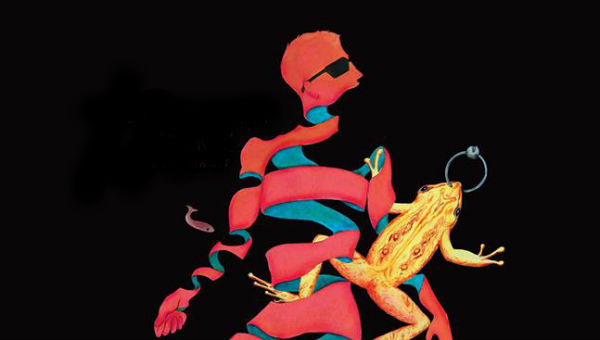Cult. That’s the word that sums up Om Darbadar, Kamal Swaroop’s absurdist drama. Why is this almost incoherent and decidedly surreal satirical intersection of mythology and actuality a favorite title that crops up in conversations that tend towards the relentless and abject commercialization of Hindi films? ”We need an Om Darbadar,” it has been said, “to shake things up – to show that art still abounds in our cinema.”
Made in 1988, Om Darbadar finally releases on the big screen 26 years later. Why now? Why do NFDC, PVR, and scores of its fans want it released? Why should this audience of 2013 watch Om Darbadar? Will they even get it? It is even possible to comprehend at one go?
The answer lies in the question.
No, it’s not possible to “understand” the film in a conventional sense. It maybe conceivable to join the dots of the plot together after repeated viewings of the non-linear structure and to make some sense of the utterly random shots between scenes but this exercise would mean missing the point. You will only get out of it what you seek. And this – this need to take your time and reflect – almost entirely missing nowadays from our movie-watching experiences is why you should watch Om Darbadar.
The question I keep trying to answer every time I watch (parts of) the film is where does director Kamal Swaroop’s vision originate? The poster sports a rather marketable tagline “The great Indian LSD trip” painting visions of filmmakers on acid and content that resembles the work of Terry Gilliam or Salvador Dali. Swaroop himself may have claimed to an interviewer that his thoughts couldn’t be penned down on paper and that abstract images from his mind had to be straight away captured on celluloid; a “ritual” he called it. The film has created its own myth, its own urban legends. It is unlikely that NFDC of the 80’s would’ve financed a film for a struggling director without anything less than a bound script and a hundred meetings. More likely is that Swaroop draws from his own life: his childhood in Ajmer (where the film is set) of limited exposure and hardship and trying to make sense of the contrast the 80s brought using deep-rooted metaphors – many of which he tries to explain over and again unsuccessfully – much to frustration of his followers.
All bioscope (a dated term for film) must derive from biology, he says; “ban all googlies in cricket and generally in life” goes a dialogue in the film. Diamonds in frogs, the art of holding one’s breath, the “boldness” of a woman sitting through adult films in a ramshackle theater, the music and song sequences lampooning all that is going haywire with Hindi films of the time; at the cost of his work looking reckless and dilettantish, and as a deliberate attempt to misdirect the audience, these themes have deep meaning for Swaroop. Can we find our own interpretations?
Om Darbadar also speaks volumes of institutions like the FTII and NFDC that allowed an iconoclast’s mind to realize such an avant-garde vision. The work coming out of here retains the spirit of innovation despite strapped conditions and bureaucratic indifference. Some credit is also due to the jury of the 1989 Filmfare who had the foresight to award it the critics’ best film.
Releasing on the same day as Miss Lovely, another experimental effort, Om Darbadar may even recover its modest 10-lakh production budget. If Miss Lovely is not everybody’s cup of tea, Om Darbadar is almost certainly no one’s cup of tea. And that’s what makes it cult and worth experiencing.


